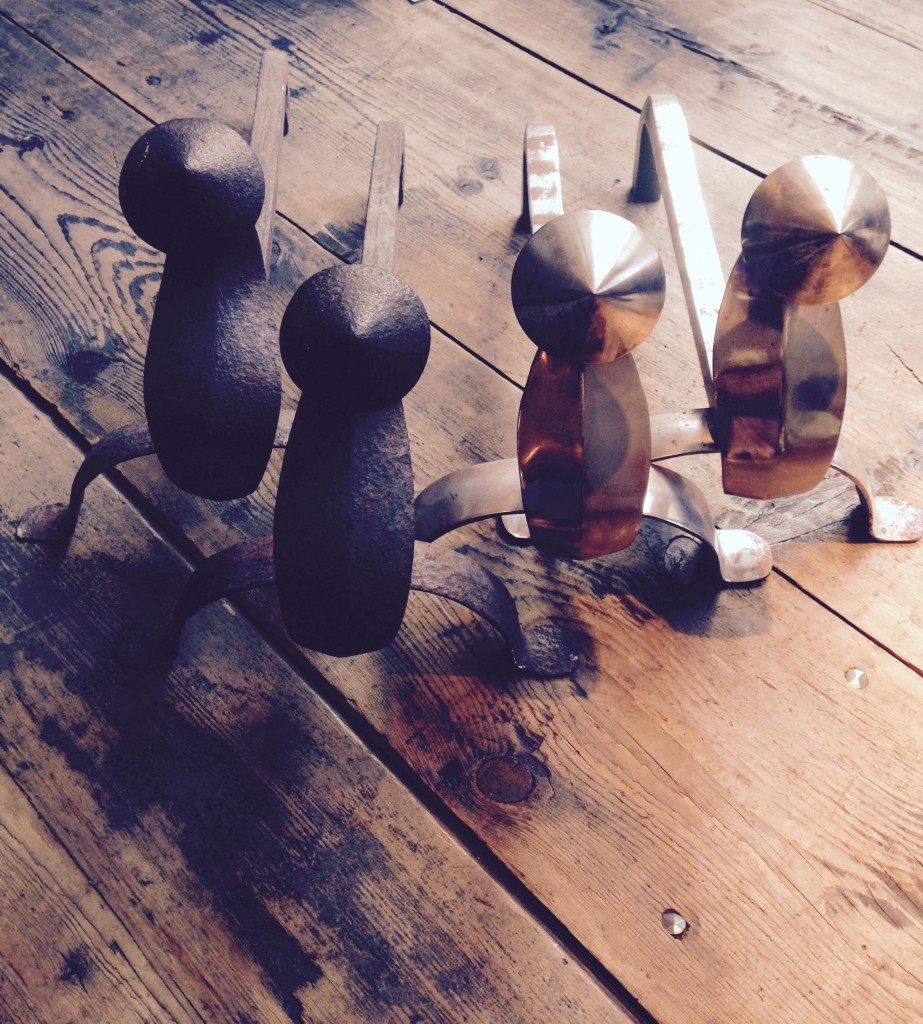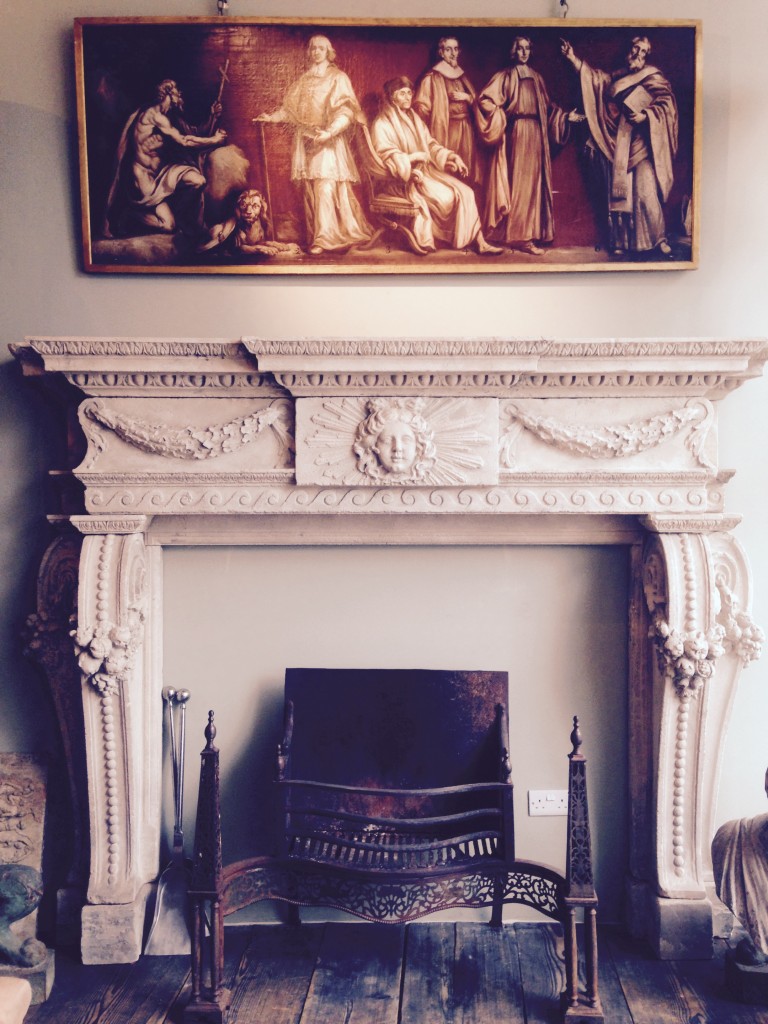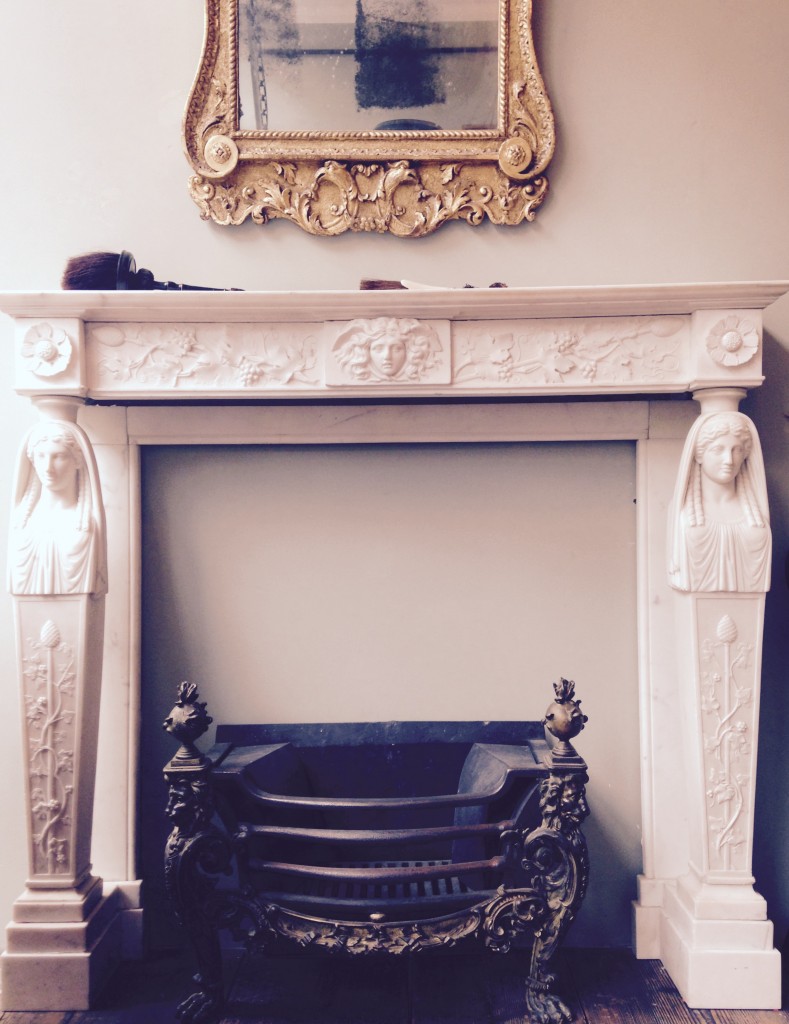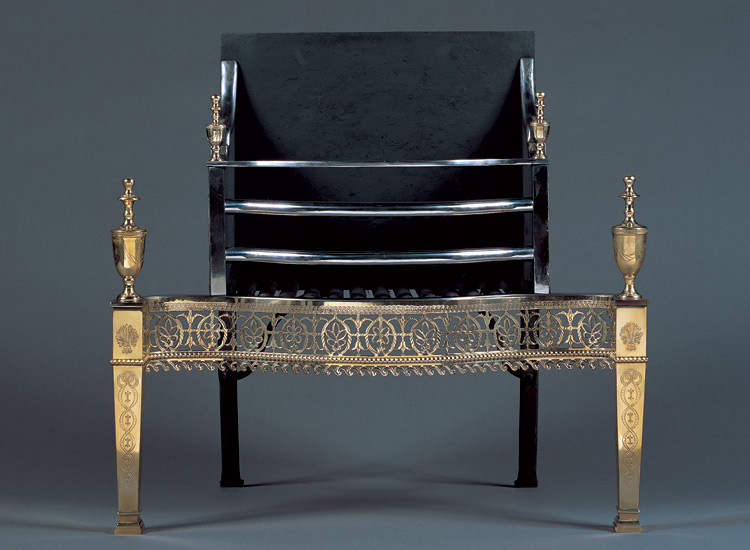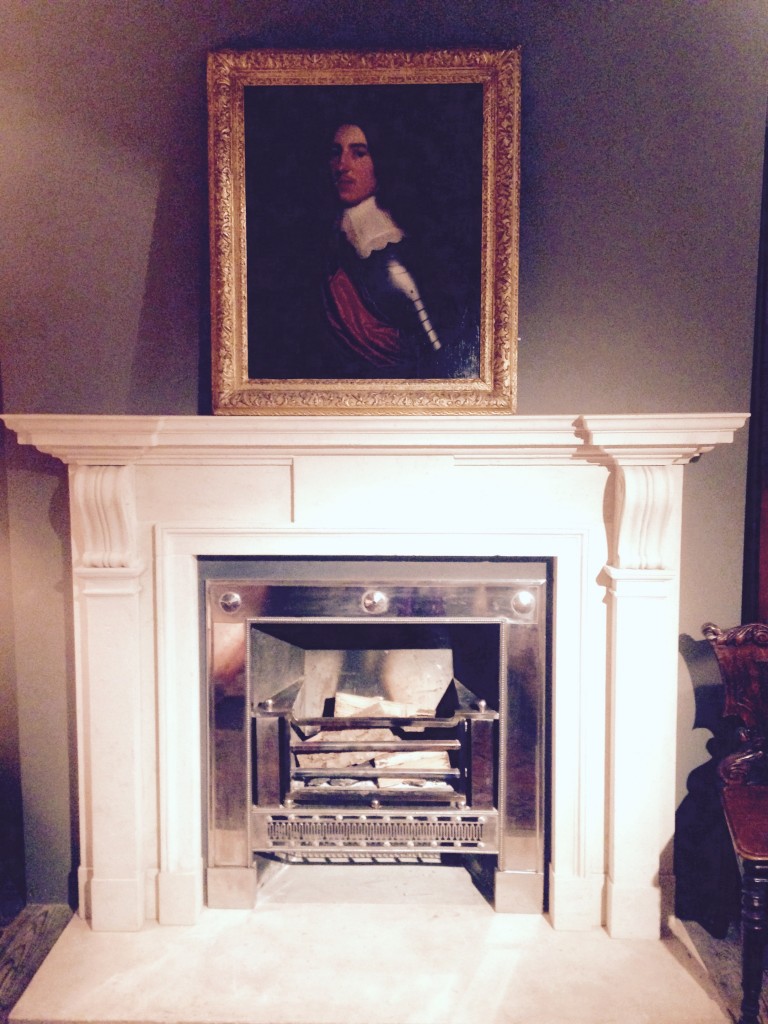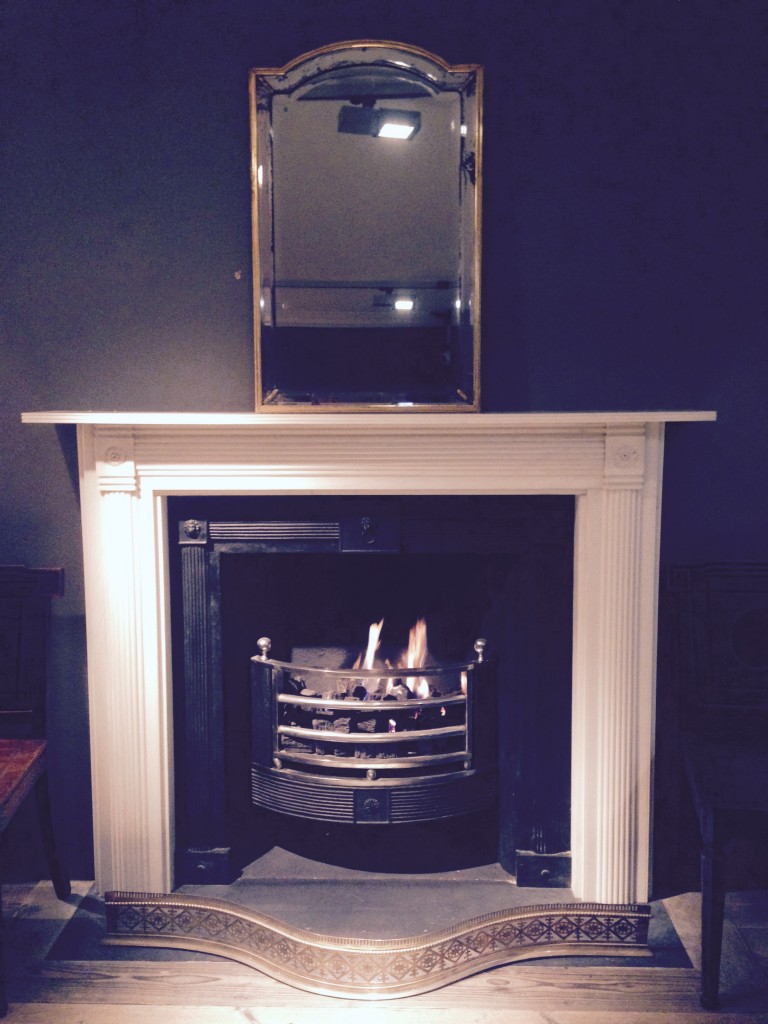The choosing of a fire grate is often considered a secondary decision when buying a chimneypiece or fireplace. Choosing the correct handcrafted accessories for your fire surround is just as important as the mantel itself. You may have heard of register fire grates, fire baskets, andirons, fire dogs and swans nests….. but what do they all mean? How do you choose? Let me explain….
Historically there are many routes to choose from. It depends on what ‘look’ you want to go for and how formal you want to be. You may want a simple fire surround with a very ornate fire basket, you may want a more rustic feel or to be historically accurate. There are a myriad of choices and the team at Jamb can help you to make the right decision.
To understand the design and purpose of each fire implement a good place to start is to understand the history of the fire.
Fire dogs, also known as Andirons are the oldest fire implement design dating back to the Iron age. Simple U shaped horizontal metal bars with a curved end that were designed to be both decorative and yet practical . Often made from simple wrought iron they raised the timber off the ground to allow the air to circulate whilst the ash fell onto the hearth. Very simple but effective. In wealthier homes the firedogs were used to display family crests or other emblems adorned with silver or brass. All of our collections are based on antiques that I have purchased over the years and here you can see the originals with our forged steel large Linton fire dogs.
These are perfect for a simple, more rustic feel in your home and also for a smaller chamber. A swans nest (a metal grill) can also be laid over the andirons.
When coal was introduced it could no longer simply be burnt on the hearth surface like wood but required more oxygen to ignite and to be raised from the floor to increase air flow. At this point fire dogs were replaced by fire baskets or dog grates. From the beginning of the C18th grates became increasingly refined with the material ranging from brass and steel to exotic alloys from the Orient like Paktong. Embellished with engravings and complicated fret work they were highly prised and expensive additions to the fireplace.
By the early 18th century, the free standing basket was backed by a cast iron fire plate, or fireback, which rested on wrought iron struts, with sides of cast iron and a grid through which loose ash fell. Decoration was confined to the front which through the decades became increasingly elaborate. For example this superb antique William IV Rococo revival bronze grate.
Fire baskets are very versatile and we have a wide selection of antique and reproduction styles from polished steel Georgian designs like the Coleridge to the more elaborate Croome Court fire basket with its richly decorated brass, that combines all the best design motifs of the 1770s. Based on an iconic Paktong grate originally created for Croome Court, Worcestershire in the second half of 18th Century, it considered to be one of Robert Adam’s finest works. This fire basket celebrates the tradition of the great English country house.
Register grates were invented in the mid eighteenth century and evolved through to the nineteenth century to control and balance the flow of smoke and heat generated with an inner cast iron or steel chamber within the fire surround. Further design developments were made during this time by introducing steel or brass slips to ensure the correct draw. Many varying patterns were manufactured mostly using steel and again more elaborate models were embellished with engravings.
Many Londoners breathed a non toxic sigh of relief when Count Rumford revolutionised the design of the fireplace in the late eighteenth century, changing the structure and design of the flu and hearth resulting in a streamlined air flow, efficient burning fires and no more smoke filled rooms.
A register fire grate creates a more polished look and is a fantastic tool to regulate the fire and make it draw properly without the use of ugly slips. They are fitted back into the chamber and then the fire surround is fixed to the wall tightly against it. With a real fire, a grate will patinate over time but if it’s a gas fire you choose our London workshop can professionally age and distress to your preference. All our reproduction grates are exact replicas of C18th originals and are designed to burn solid fuel , however with todays regulations or if a client requires they can all be converted to gas.









